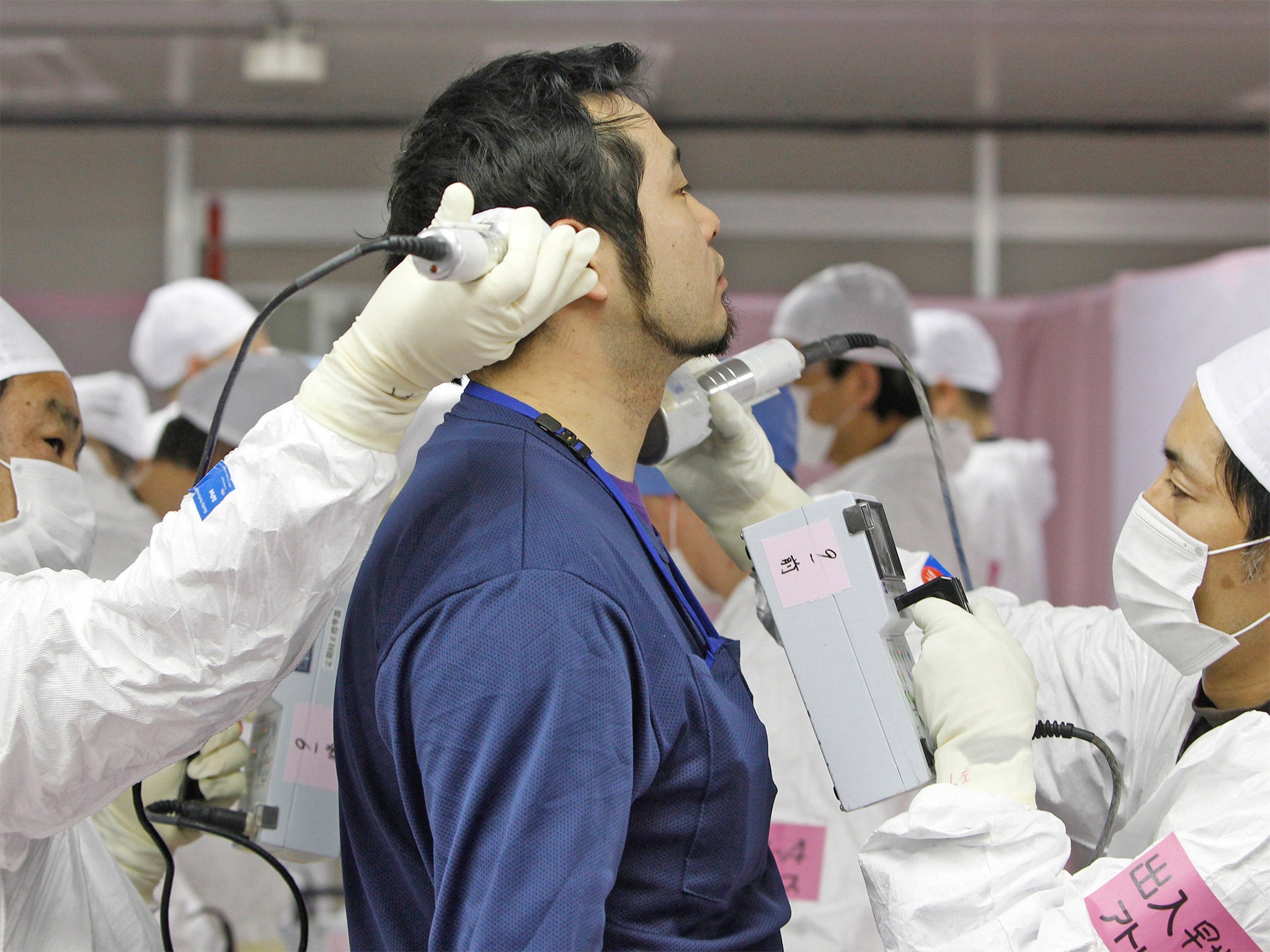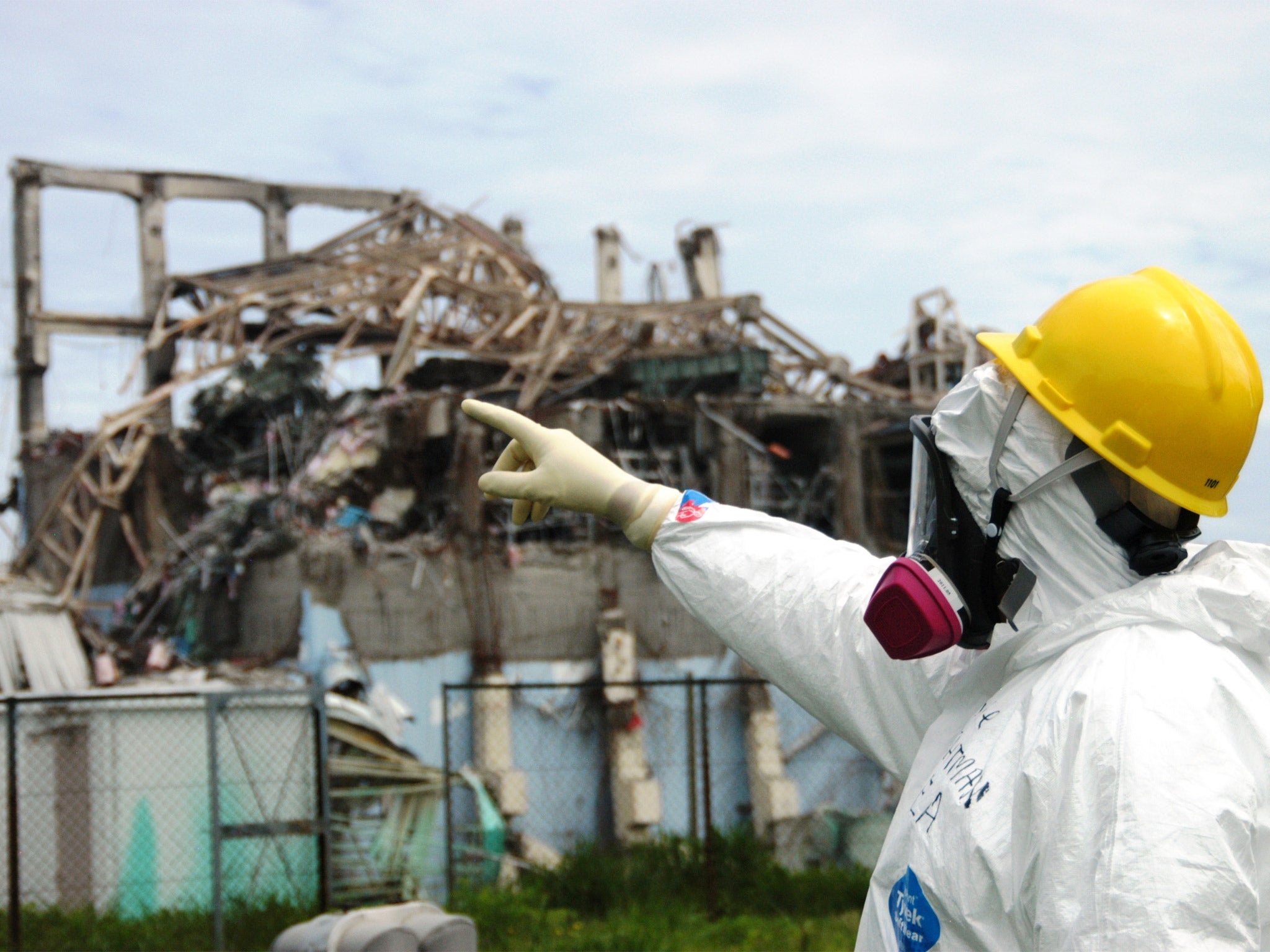Fukushima clean up worker diagnosed with cancer – and he may be the first of many
The world marvelled at the courage of those who helped decommission the ruined reactors after the nuclear meltdown, but their bravery may have come at a huge cost

Your support helps us to tell the story
From reproductive rights to climate change to Big Tech, The Independent is on the ground when the story is developing. Whether it's investigating the financials of Elon Musk's pro-Trump PAC or producing our latest documentary, 'The A Word', which shines a light on the American women fighting for reproductive rights, we know how important it is to parse out the facts from the messaging.
At such a critical moment in US history, we need reporters on the ground. Your donation allows us to keep sending journalists to speak to both sides of the story.
The Independent is trusted by Americans across the entire political spectrum. And unlike many other quality news outlets, we choose not to lock Americans out of our reporting and analysis with paywalls. We believe quality journalism should be available to everyone, paid for by those who can afford it.
Your support makes all the difference.As soon as it was deemed safe enough, workers were gradually called in to clean up the mess. Often poorly paid, their job was to help to decommission the ruined reactors at the Fukushima Daiichi nuclear plant after its meltdown.
For more than four-and-a-half years, the clean-up effort continued amid disputes over the safety of the 44,000 people working there. Now, in what some say could be the start of a fresh crisis for operator Tokyo Electric Power Co (Tepco), the Japanese government admitted that one such labourer, 41, has cancer.
The man had worked on construction and welding near crippled reactors three and four between 2012 and 2013. After leaving his job at the plant, he became ill. He is said to have contracted leukaemia while installing covers over the damaged reactors and is receiving compensation – the first confirmed cancer diagnosis at the plant since the triple meltdowns of March 2011.

The news wiped nearly 4.5 per cent off the value of Tepco shares and triggered speculation that more cases, and more compensation claims, could follow. “Tepco could be facing huge lawsuits if and when radiation leaks are linked to health issues,” one analyst told Bloomberg.
The revelation follows the publication last week of a study claiming that thyroid cancer rates among children living near the meltdowns are up to 50 times higher than normal. The study, published in the journal Epidemiology, has been hotly disputed.
Japan’s ministry of labour said the unidentified worker, who was in his late thirties during his stint at the plant and had worked at other nuclear sites, is being treated for his illness, but declined to divulge his condition. “The recognition he is sick from his work at the plant means his hospital bills will be paid, along with all costs incurred from being unemployed,” the ministry said.
Tepco controversially raised the maximum limit of cumulative exposure for on-site workers to 250 millisieverts during the height of the nuclear disaster, but reduced it to 100 in December 2011. A report last year on 25,000 workers by the United Nations Scientific Committee on the Effects of Atomic Radiation said Tepco had probably underestimated exposure by contract workers.
Tens of thousands of people have been employed to decontaminate the surrounding countryside from the post-accident fallout. “We would like to offer our condolences to the worker,” a Tepco spokesperson said. “We will continue to reduce the radiation dose of the working environment and manage thoroughly the radiation exposure to workers.”
In 2013, the World Health Organisation said people in the worst-affected areas of the disaster had only a small risk of developing cancer. A report this year by the International Atomic Energy Agency (IAEA) said a rise in thyroid cancer among children was unlikely.
Greenpeace International, the environmental watchdog, called the IAEA report “clearly premature”, however, in light of the latest government admission. “The impacts both from the initial releases and from the ongoing nuclear crisis have yet to be fully seen,” said Jan Van de Putte, a Greenpeace radiation expert.
If more cases are confirmed, compensation will be paid
Tepco estimates the final tally for escaped radiation from the Fukushima disaster to be 900,000 terabecquerels, equivalent to about one-fifth of the amount released by the Chernobyl accident in 1986. Most was vented in the first three weeks.
The impact of radiation is notoriously difficult to determine, but one outcome of Chernobyl was elevated rates of thyroid cancer in children. A 2003-05 United Nations-led study cited close to 5,000 cases of thyroid cancers in the most affected areas, probably from drinking contaminated milk.
Scientists in Japan say a large rise in cancers is unlikely because screening is much more rigorous than in Chernobyl. Regular ultrasound testing of 370,000 children in Fukushima prefecture has uncovered just 137 confirmed or suspected cases of thyroid cancer.
But Toshihide Tsuda, the author of the Epidemiology study, disputes that more screening is behind the cancer surge. The thyroid rates are “more than expected and emerging faster than expected”, he told Reuters. “This is 20 times to 50 times what would be normally expected.”
Mr Tsuda’s results were criticised as “unscientific” by Noboru Takamura, a radiation specialist at the Atomic Bomb Disease Institute at Nagasaki University. “They don’t look at individual doses, which is only one problem with the study,” he said.
Neither Tepco nor the government would be drawn into speculation on whether more cancers are expected. “If more cases are confirmed, compensation will be paid,” the labour ministry said.
On Monday, Japan’s Atomic Energy Agency officially opened a new facility near Fukushima that will develop remote-control technologies to decommission the two reactors at the crippled power plant which remain too dangerous for workers to enter – reactors number one and two.
Among those at the ceremony was the Prime Minister, Shinzo Abe. “The decommissioning process is a lengthy one that will take up to 40 years,” Mr Abe said. “This facility was set up to consolidate the world’s knowledge to face the unknown.”
Join our commenting forum
Join thought-provoking conversations, follow other Independent readers and see their replies
Comments